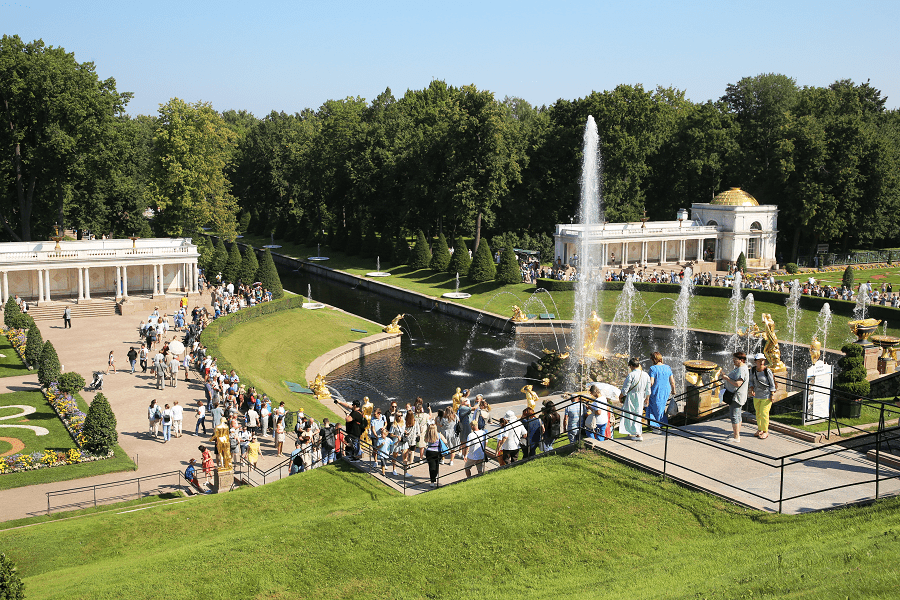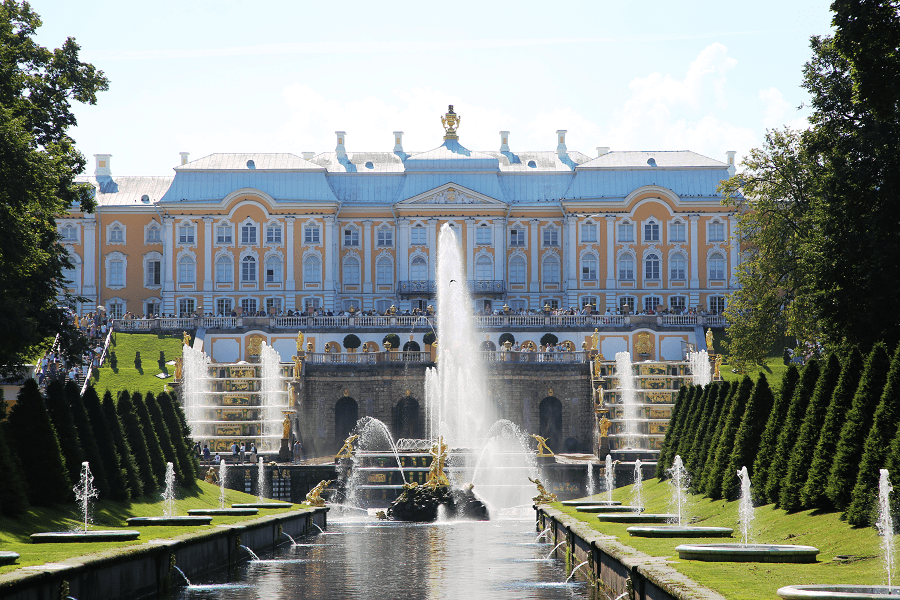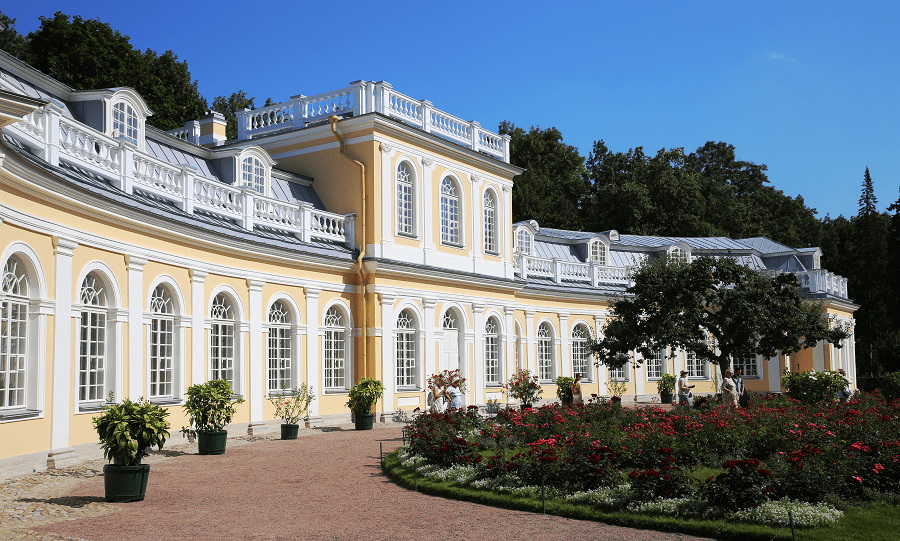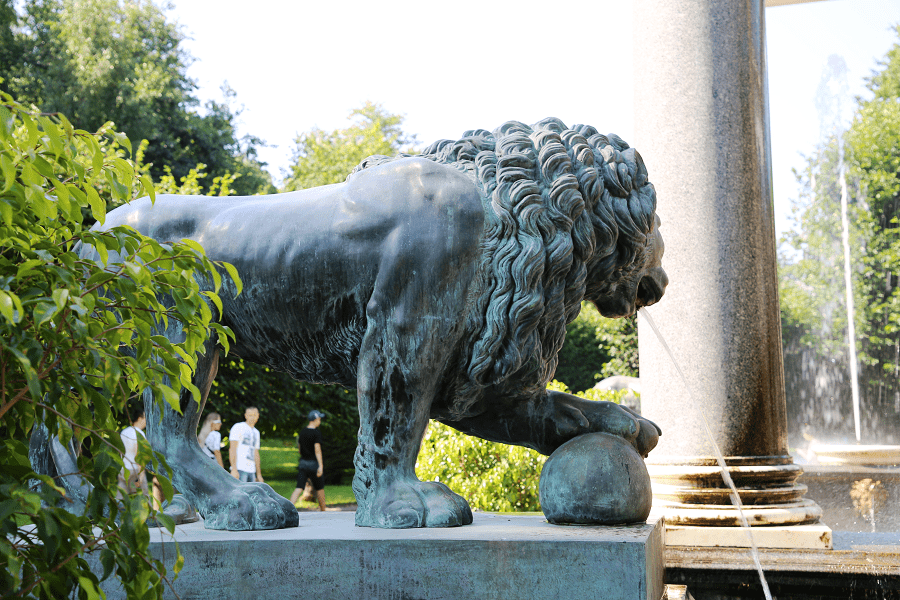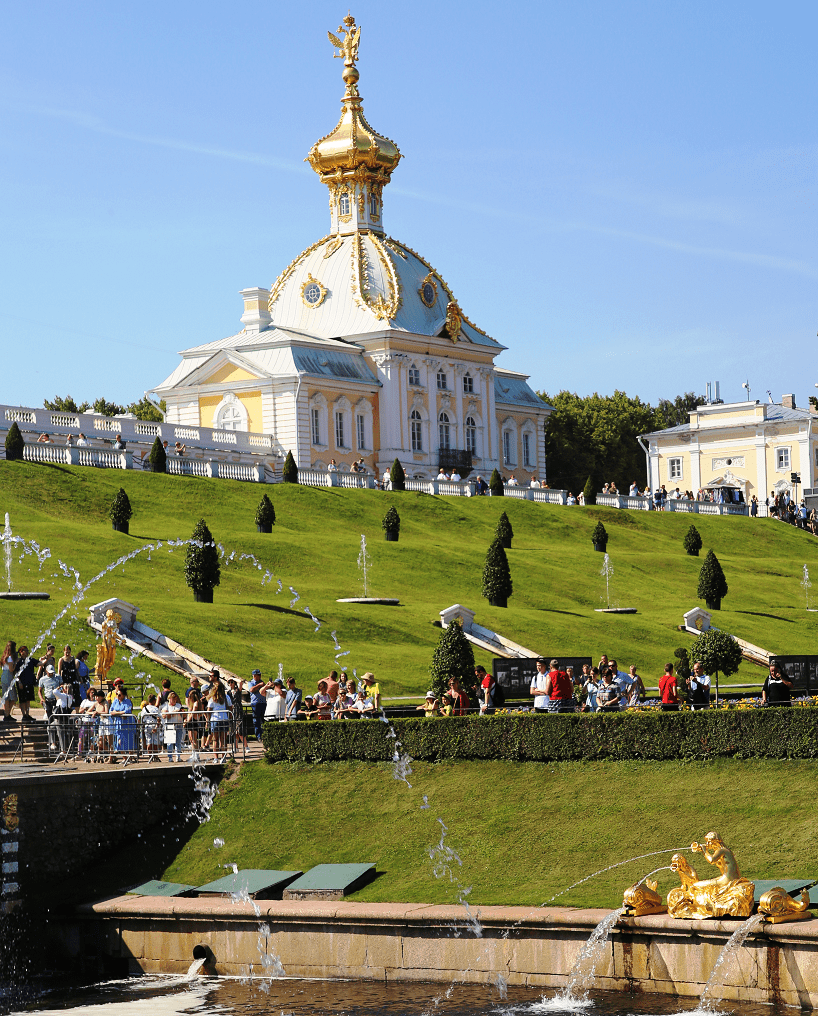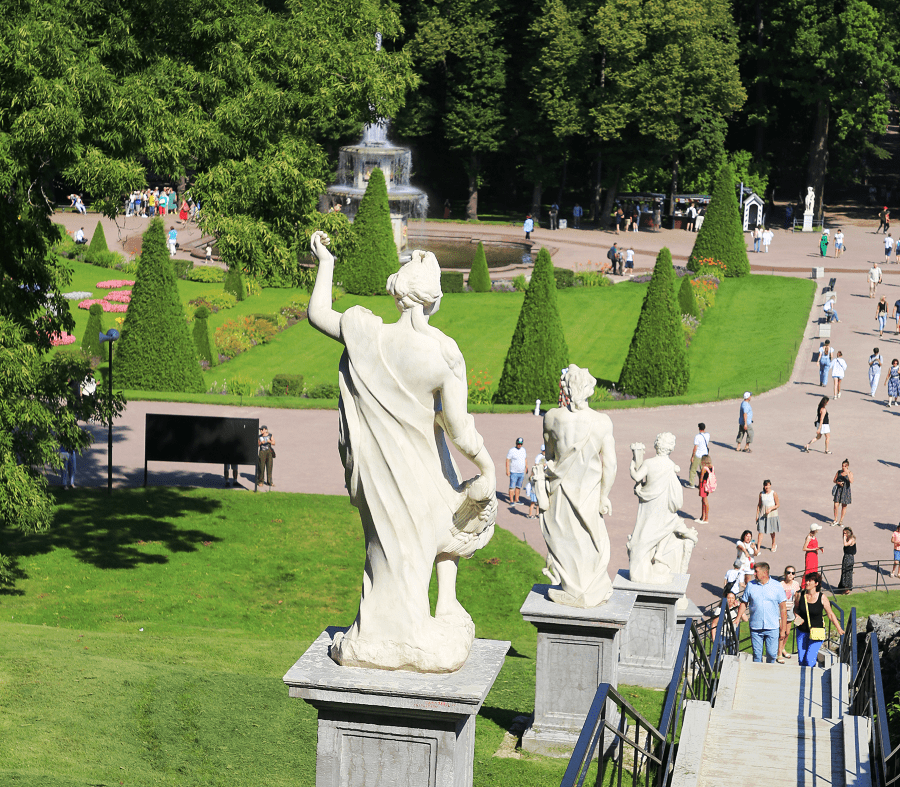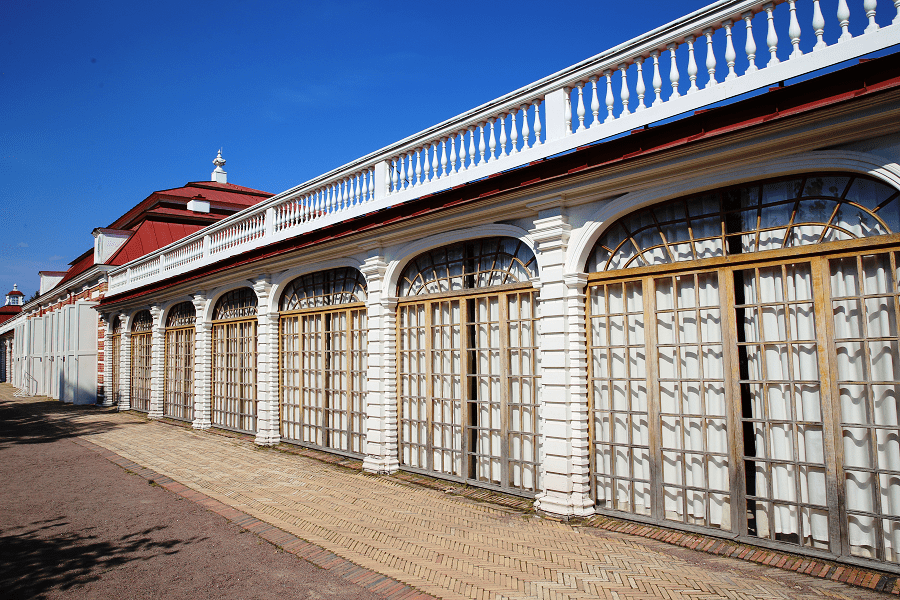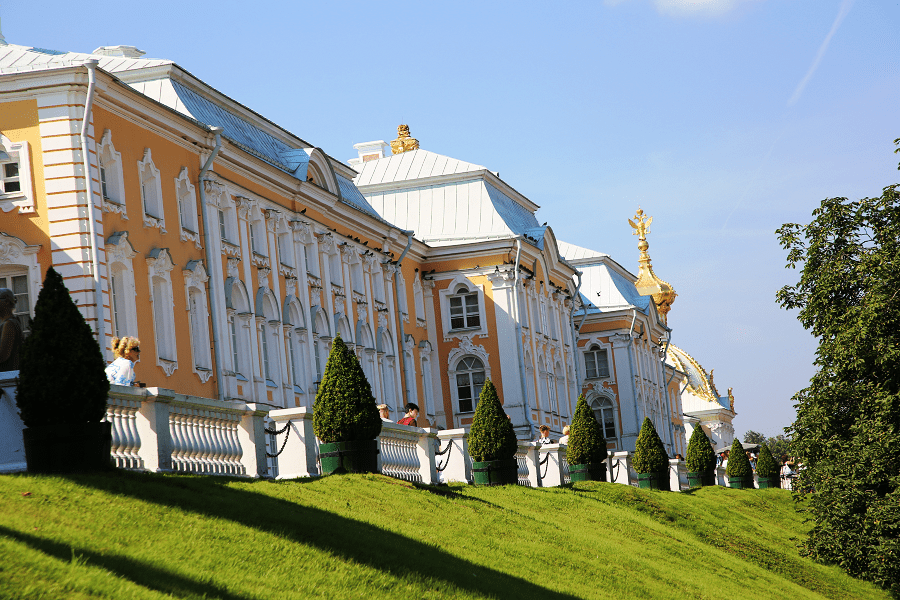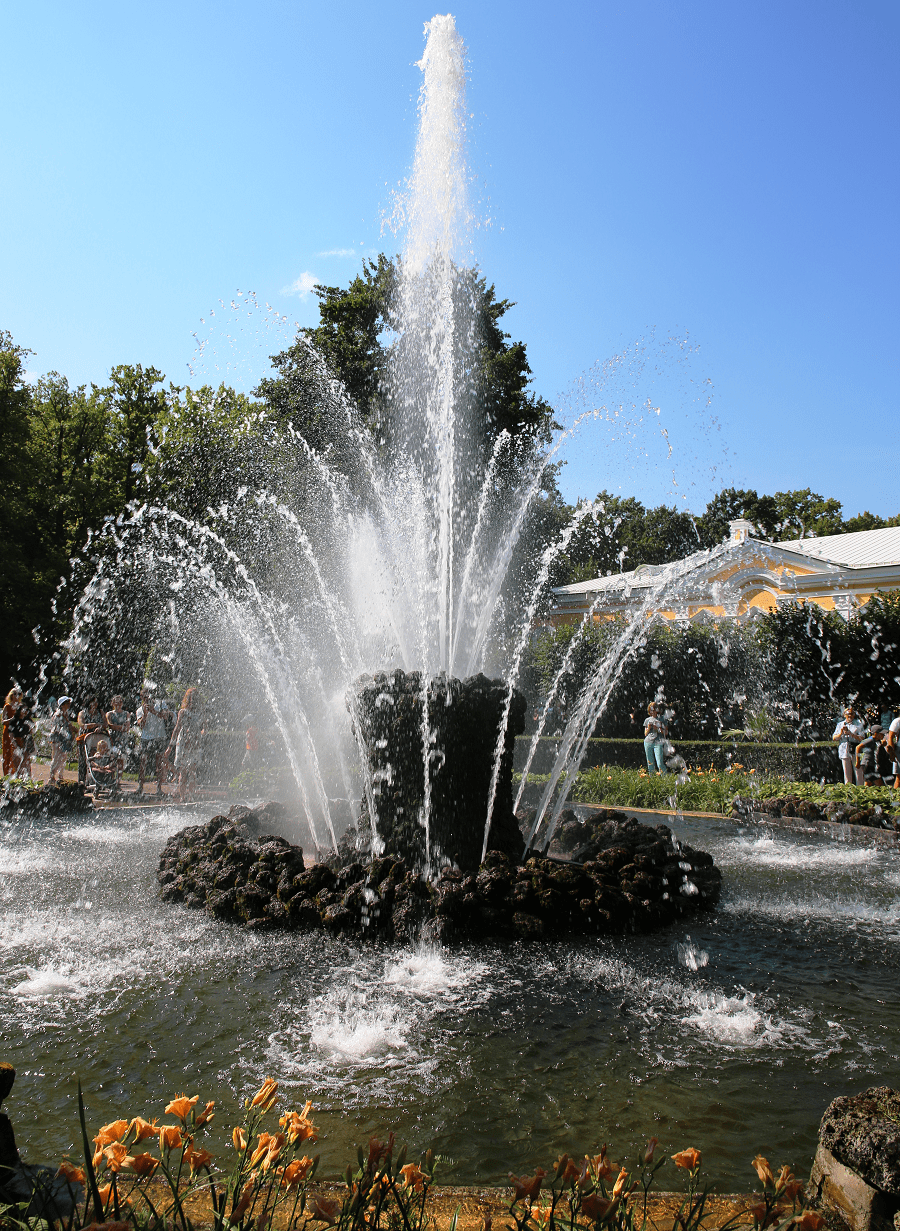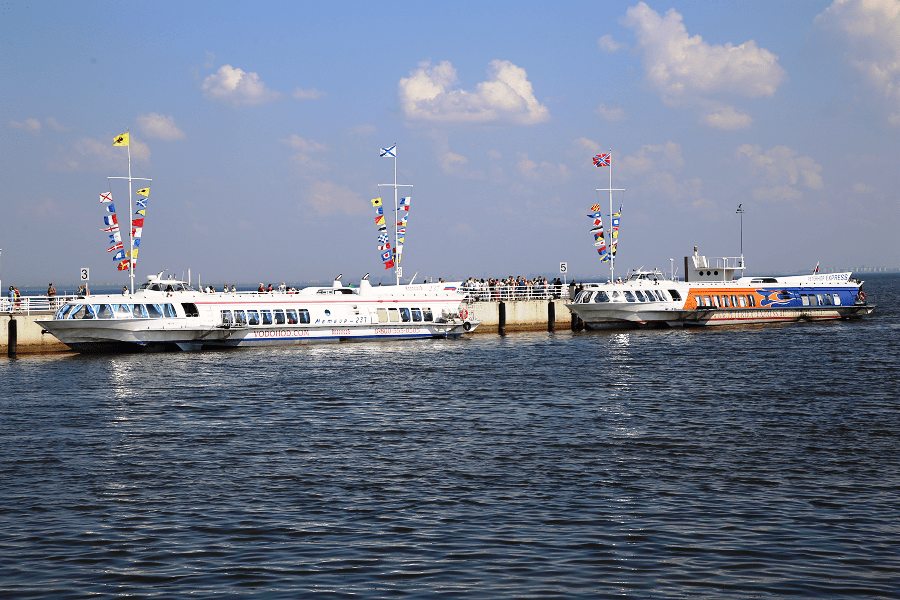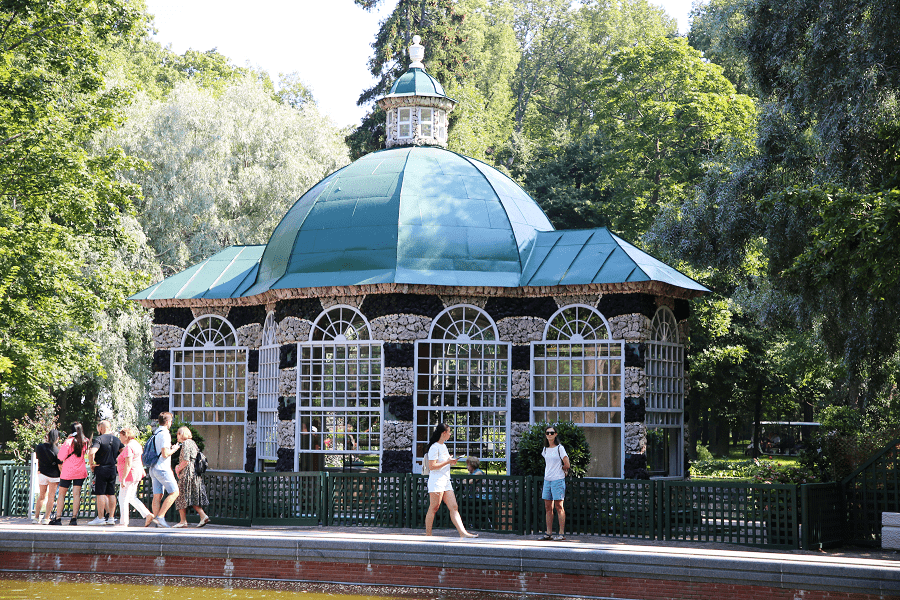Petergof (from German Petergof – “Peter’s courtyard”, from 1944 to 1997 – Petrodvorets) is an intracity municipality as part of the Petrodvortsovy district of the federal city of St. Petersburg.
Located on the southern coast of the Gulf of Finland to the west of St. Petersburg, 29 km by rail. Large tourist (GMZ Peterhof), scientific and educational center.
Petergof was founded in 1710 as an imperial country residence, the status of the city – since 1762.
The city is a monument of world architecture and palace and park art of the XVIII-XIX centuries – the museum-reserve “Petergof”. Science city (2005-2010).
Petergof is one of the most visited museum cities in Russia and the world. In 2019, it was visited by over 6 million people.
In August of the same year, a record for a day was set – 51,500 people.
Many tourists go to Petergof to see the delightful fountains, which are mostly located in the Lower Park of the museum.
The fountains start at the end of April and close in mid-October. On this occasion, grandiose theatrical celebrations take place, which gather many guests, both domestic and foreign.
Main attractions
A monument of world architecture and palace and park art. It includes a palace and park ensemble of the 18th-19th centuries – a former suburban royal residence, turned into a museum after nationalization on May 19, 1918. The modern status of the museum-reserve received in 1990.
The palace-ensemble along with the St. Peterburg center is recognized as a UNESCO World Heritage Site.
The museum-reserve includes:
Grand Petergof Palace
The Palace is the main building of the Petergof Palace and Park Ensemble. Initially, a rather modest royal palace, built in the style of “Peter’s baroque” in 1714-1725 according to the project of Jean-Baptiste Le Blond, and then Nicola Michetti, was rebuilt under Empress Elizabeth Petrovna in 1747-1752 according to the model of Versailles (architect F.-B. Rastrelli), in the so-called mature baroque style.
30 halls, including richly decorated ceremonial halls, stuccoed in marble, with painted ceilings, inlaid parquet and gilded walls.
Upper garden
A regular garden (15 hectares) to the south of the Grand Palace was laid out in 1714-1724 according to the plan of the architect B. Rastrelli.
Five ponds, fountains (five fountains and a cascade: fountains of Square Ponds, Mezheumny, Oak fountains and the Neptune fountain with the Apollo cascade), statues and trellis pavilions.
Lower park
A regular park (102 hectares) on the shores of the Gulf of Finland was laid out on the model of the country residence of the French king Louis XIV in Versailles in the then fashionable French style.
Sketches of Peter I served as the material for the architect I. Braunstein to draw up the Master Plan of the residence. The sea channel from the Grand Palace to the bay cuts the park into two almost equal parts.
There are several artistically finished architectural and park ensembles in the park: the Grand Palace with a cascade, a canal and flower beds, the Large Orangery with an orchard and greenhouses, the Monplaisir Palace with a garden and greenhouses “for cooking herbs”, the Marly Palace with vegetable gardens, orchards and fish ponds.
However, the world-wide fame of the Lower Park of Petergof was brought by its unique and numerous fountains (more than 150 fountains and four cascades): the Grand Cascade with the Samson fountain in front of it, the Chalice twin fountains, the Marble Benches and Voronikhinsky Colonnades fountains, the Sea Canal with the Alley of Fountains, Chess Mountain Cascade, Orangery Fountain, Roman Fountains, Adam Fountain, Sheaf Fountain and Bell Fountains, Sun Fountain, Pyramid Fountain, Fountain of Fountains, Lion Cascades and “Golden Mountain”, “Favorite” fountain, “Eva” fountain, “Whale” fountain, “Menager” fountains, “Klosha” fountains.
Working days
Parks – in winter: Lower Park – from 09:00 to 18:00, Alexandria Park – from 09:00 to 20:00, Oranienbaum Park – from 09:00 to 19:00.
Museums – in winter from 10:30 to 17:00 and 18:00, in summer from 10:30 to 19:00 (entry to the Grand Palace from 450 rubles)
Fountains – summer period of fountains (approximately from April 24 to October 18): daily from 11:00 to 18:00
Spring Fountain Opening Festival 2022 – May 21
Turning off fountains for the winter period (approx.) from October 18.
In winter, the fountains do not work.
Parks
Upper garden
In winter (approx. from October 13 to April 24) – daily from 9:00 to 18:00.
In summer (approx. from April 24 to October 18) – daily from 9:00 to 19:00;
Free admission.
Lower park
In winter (approx. from October 13 to April 24) – daily from 9:00 to 18:00. Free admission;
Summer (approx. from April 24 to October 18) – daily from 9:00 to 19:00
Ticket prices in summer: Adult ticket for citizens of the Russian Federation and the EAEU – 450 rubles. Full (for foreign citizens) – 900 rubles.
How to get to?
The city has a developed network of social buses (24 routes) and commercial fixed-route taxis (10 routes). The routes of these modes of transport connect the city of Petergof with St. Petersburg (metro stations Avtovo, Kirovsky Zavod, Leninsky Prospekt, Prospekt Veteranov, Baltiyskaya).
The railway line St. Petersburg – Kalishche passes through Petergof. There are two railway stations in the city: New Petergof, Old Petergof and Universitetskaya platform.
Sea pier “Petrodvorets” in the Lower Park on the Gulf of Finland, from where hydrofoil “meteors” and “rockets” go to St. Petersburg (piers near the Hermitage, the Bronze Horseman and the Kunstkamera).
Helipad next to the pier.









